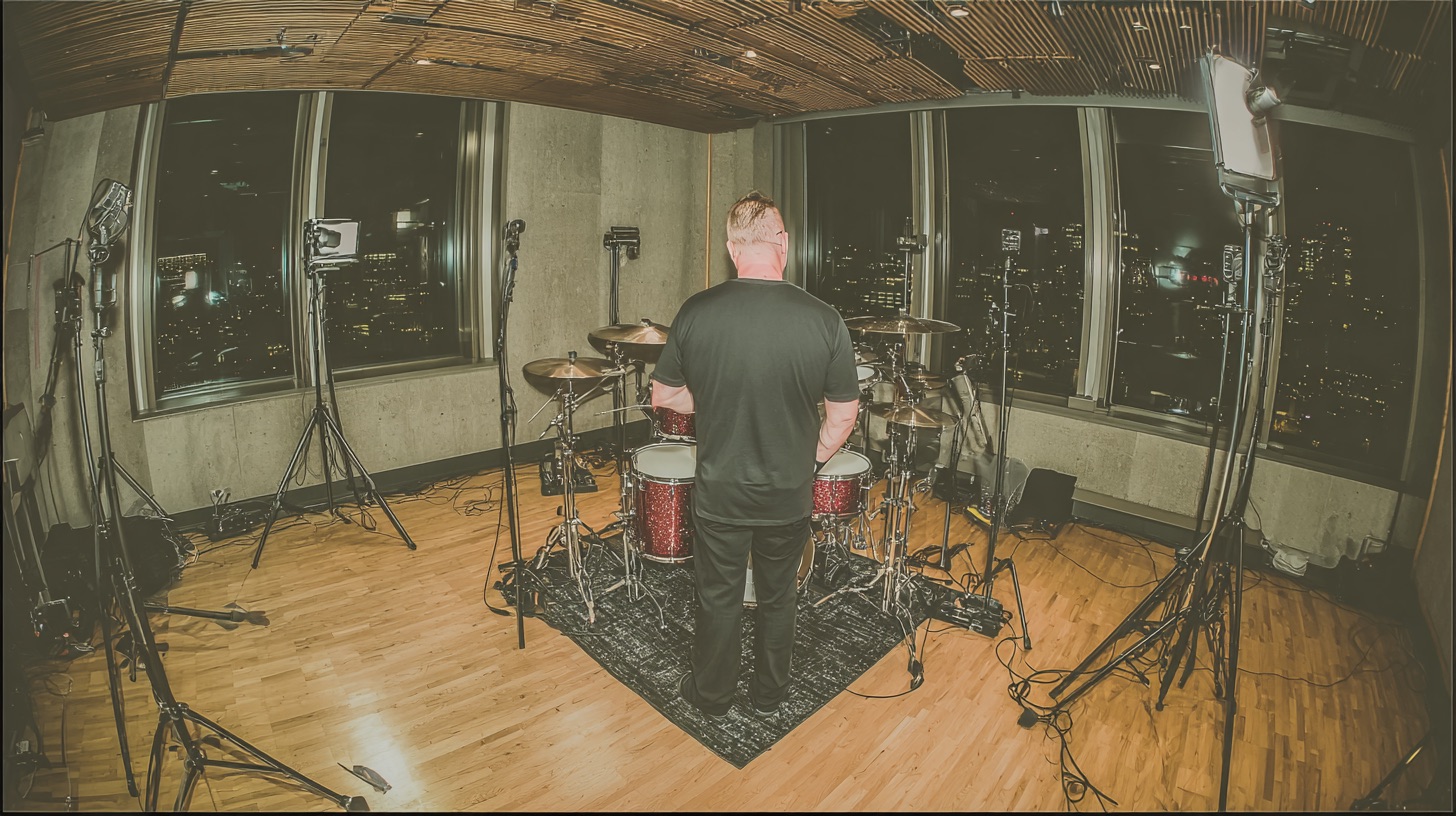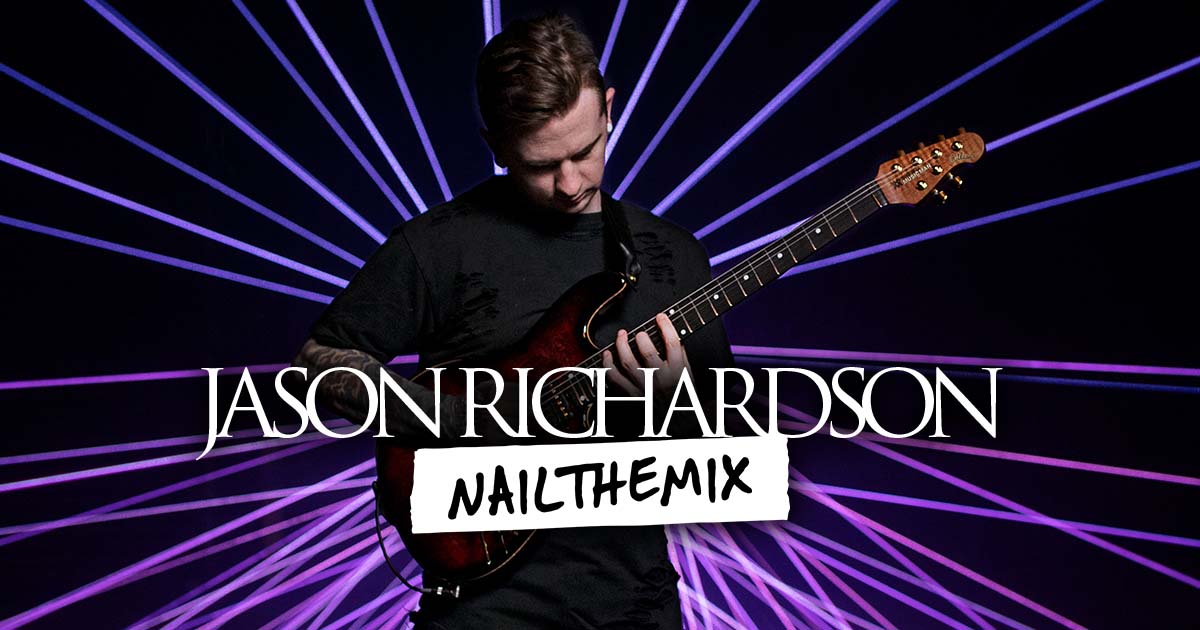
3/4 Time Signature: Making It Punch in Modern Metal Mixes
Nail The Mix Staff
Alright, let's talk about something that can either make your metal track sound uniquely badass or a bit like a confused polka: the 3/4 time signature. Yeah, the "waltz" time. But trust me, in the hands of modern metal producers and musicians, 3/4 can be a seriously heavy weapon. Gone are the days when odd times were just for prog nerds (though we love 'em for popularizing it!); now, it's a tool for adding unexpected groove and rhythmic sophistication to all sorts of metal.
The thing is, with the bar for production quality being sky-high these days – even local bands are expected to sound like they've had a six-figure budget – you can't just throw in a 3/4 section and hope for the best. It needs to slam. It needs to be clear, intentional, and fit that polished modern metal aesthetic. So, let’s dive into how you can make 3/4 time work for you, not against you.
What Exactly IS 3/4 Time? (And Why Metal Bands Are Using It)
Quick refresher for those who snoozed through theory class: 3/4 time means there are three quarter notes per measure (or bar). The "3" tells you how many beats, and the "4" tells you the quarter note gets the beat. Think "ONE-two-three, ONE-two-three." It’s got a different swing, a different kind of pulse than the standard 4/4 ("ONE-two-three-four") that dominates most heavy music.
So why are metal bands, from prog giants like Opeth and Periphery to more experimental acts, messing with it?
- Unique Groove: It breaks monotony and can create a really cool, lurching, or swinging feel that stands out.
- Rhythmic Tension: Switching between 4/4 and 3/4 can build incredible tension and release.
- Sophistication: Let's be real, it shows off musical chops. Modern metal musicianship is insane, and playing tight in odd times is part of that.
- Genre Blending: Modern metal loves to pull from everywhere. 3/4 has roots in classical, folk, and even some darker, heavier non-metal genres. Bringing that vibe into a metal context is prime territory for innovation.
The challenge? Making it sound heavy and not like your band decided to audition for "Dancing with the Stars."
Making 3/4 Groove: The Rhythmic Foundation
The groove in 3/4 is everything. If the rhythm section isn’t locked in and purposeful, the whole thing falls apart.
Drumming in 3/4: Beyond the "Oom-Pah-Pah"
Your drummer (or your drum programming) is key to making 3/4 feel powerful. Forget the traditional waltz beat.
- Accenting is King:
- Strong Beat 1: Often, you’ll still want a strong emphasis on beat 1 to anchor everything. A kick and a snare here can provide that familiar punch.
- Syncopated Snares: Try hitting the snare on beat 2, or even the "and" of 2, to create a more off-kilter, driving feel. A snare on beat 3 can also work, giving it a half-time waltz vibe.
- Kick Patterns:
- A simple kick on beat 1 is solid.
- Kicks on beats 1 and 3 can create a driving pulse.
- For something more complex, try kick on 1, the "and" of 2, and then 3. This starts to get into more progressive territory.
- Pro Tip: With super low-tuned guitars, make sure your kick pattern has space. Sometimes less is more to let those low guitar chugs breathe.
- Programming 3/4 Drums:
- When using libraries like Get Good Drums (GGD) or Toontrack Superior Drummer 3, pay close attention to the grid in your DAW (Logic Pro X, Reaper, Pro Tools, Cubase etc.). Set your session to 3/4 time!
- Humanization: This is CRUCIAL for making your programmed drums sound real. Don’t just quantize everything to 100%. Use subtle velocity variations, especially on hi-hats and cymbals. Slightly nudge snare hits – some drummers play a bit behind the beat for feel, others push it. Experiment! Many DAWs have built-in humanization functions, or you can do it manually.
- Ghost Notes: Sprinkle in soft ghost notes on the snare between the main beats to add complexity and a more "live" feel.
- Sample Replacement/Augmentation: Even if you program, blending in punchy samples from libraries like the Joey Sturgis Tones Drumforge or STL Tones Howard Benson Drums for your kick and snare will help them cut through, especially in a dense 3/4 passage. The modern metal expectation is polished and punchy.
Bass Guitar: Locking in the Low End Waltz (of Death)
The bass needs to glue the drums and guitars together, especially in an unfamiliar meter like 3/4.
- Follow the Kick (Mostly): A good starting point is to have the bass lock in with the main kick drum accents. This provides a super solid foundation.
- Counter-Rhythms: For a more proggy or technical feel, the bass can play lines that create a counterpoint to the main 3/4 pulse. This requires careful arrangement so it doesn’t just sound like a mess.
- Sustain vs. Staccato:
- Sustaining notes across beats can emphasize the "three" feel.
- Playing staccato, punchy notes can make it feel more aggressive and percussive.
- Low Tunings in 3/4: This is where things get tricky. If you’ve got guitars tuned to Drop F and the bass is even lower, clarity is paramount.
- EQ is Your Friend: You might need to carve out distinct frequency pockets. High-pass the guitars a bit higher than you normally would to make room for the bass fundamental. Consider a slight boost in the bass around 80-120Hz for weight and 700Hz-1kHz for definition if it’s getting lost.
- DI Processing: A common modern metal technique is to split the bass DI signal. This allows plugins like Neural DSP Parallax or even a classic Tech 21 SansAmp RBI emulation to help define the bass tone, adding harmonics that help it cut through on smaller speakers, even if the fundamental is super low. Try dialing in some drive on the Parallax’s mid-band.
Guitars in 3/4: Riffing with a Different Swing
Writing heavy guitar riffs in 3/4 opens up a lot of creative possibilities.
Crafting Heavy Riffs in Triple Meter
- Down-Picking Power: For that relentless, machine-gun attack, consistent down-picking is still king, even in 3/4. Think of accenting the "ONE-two-three" with strong downstrokes.
- Alternate Picking: For faster passages or more fluid lines, alternate picking is obviously necessary. The key is maintaining rhythmic precision.
- Space is Your Ally: Don’t feel the need to fill every beat. A chug on beat 1, followed by a rest on 2 and 3, then repeated, can create a massive, lurching groove.
- Syncopation: Playing off-beat chugs or accents against the primary 3/4 pulse can make riffs sound way more interesting and aggressive. For example, a heavy chug on the "and" of beat 2.
- Riff Pattern Examples:
- The Power Waltz: Heavy, sustained power chords on beat 1 of each bar.
- The Triplet Chug: Fast, palm-muted chugs on all three beats (or subdivisions like eighth or sixteenth notes).
- The Syncopated Slam: A common pattern might be a strong accent on beat 1, a quick chug on the "and" of beat 2, and then a chug on beat 3.
Layering Guitars for Width and Impact in 3/4
Quad-tracking or at least double-tracking rhythm guitars is standard in modern metal for that huge wall of sound.
- Panning Hard: Pan your main rhythm guitars hard left and right (e.g., GTR1 100% L, GTR2 100% R).
- Rhythmic Interplay: If you have multiple guitar parts, try having them play slightly different rhythmic variations of the main riff, panned to different spots. For instance, one guitar plays straight chugs on 1, 2, 3, while another, panned opposite, plays a syncopated pattern.
- Tonal Variation: Using slightly different amp settings (e.g., one with a bit more gain via a Maxon OD808 into an EVH 5150III sim like those from Neural DSP, the other a bit drier) or even different virtual cabinets (Celestion IRs via something like Two Notes Wall of Sound) for layered parts can add depth and prevent phasing issues.
Soloing and Melodies over 3/4
Soloing in 3/4 can feel a bit different.
- Phrasing in Threes: Think about melodic phrases that naturally resolve or feel complete over 3, 6, or 9 beats.
- Anchor to the Pulse: Use the underlying "ONE-two-three" as your rhythmic anchor, even if you're playing complex lines over it.
- Modern Approaches: Guys like Tim Henson from Polyphia, while often in more complex territory, demonstrate incredible melodic creativity over non-4/4 feels. The key is often breaking free from standard blues-rock licks and thinking more about rhythmic motifs and arpeggiated ideas that fit the meter.
Mixing Challenges and Solutions for 3/4 Time
Okay, you’ve tracked (or programmed) your masterpiece in 3/4. Now, how do you mix it so it sounds polished and powerful?
Maintaining Clarity and Punch
This is always important in metal, but odd times can easily sound muddy if you’re not careful.
- Transients, Transients, Transients: The initial hit of your drums and picked guitars needs to cut. Mastering your transients is the key.
- Use a transient designer plugin like the SPL Transient Designer, Native Instruments Transient Master, or even the transient shaping capabilities within FabFilter Pro-MB. A little extra attack on the kick and snare can make a huge difference in 3/4, helping define the beats.
- Sidechain Compression: This is a classic trick for a reason.
- Subtly sidechain the bass to the kick drum. When the kick hits, the bass ducks slightly, making space for the kick’s attack.
- You can even try sidechaining rhythm guitars to the snare to help its crack cut through on accented beats.
- Strategic EQ: This is non-negotiable for clarity.
- Kick: Boost attack around 3-5kHz and weight around 50-80Hz. Scoop out some boxiness around 300-500Hz if needed.
- Snare: Body around 150-250Hz, crackle/snap around 5kHz. High-pass to remove kick bleed/rumble.
- Guitars: Knowing how to EQ metal guitar is about making space. High-pass fairly aggressively (maybe 80-120Hz depending on tuning) to leave room for the bass. Dip out any "fizzy" frequencies (often 6-10kHz) with a narrow Q on your FabFilter Pro-Q 3. Cut some low-mids (200-400Hz) if they’re clashing with the snare body or making things muddy.
- Overall: Think about where each instrument primarily "lives" in the frequency spectrum and try to give it its own space. Don’t be afraid to make bold cuts.
Creating a Sense of Flow, Not Stutter
Sometimes 3/4 can feel a bit jerky if the mix isn’t smooth.
- Automation is Your Best Friend:
- Volume Rides: Automate the volume of key elements to emphasize certain beats or transitions. Bring up the guitars slightly on the downbeat of a new 3/4 section.
- Panning Automation: Creative panning on fills or specific guitar licks can add movement.
- Effects Throws: Automate a delay or reverb send on the last snare hit of a 3-bar phrase to create a sense of space before the next section.
- Reverb and Delay – Time Them Right!
- Pre-Delay: Use pre-delay on your reverbs (like Valhalla VintageVerb or FabFilter Pro-R) to separate the dry signal from the reverb tail, enhancing clarity. Try timing the pre-delay to a 16th or 32nd note within your 3/4 tempo.
- Rhythmic Delays: Delays timed to the song’s tempo are awesome. For 3/4, a quarter note delay will give you three echoes per bar. A dotted eighth note delay can create cool syncopated patterns. Use a delay calculator or do the math:
(60,000 / BPM)gives you the milliseconds for a quarter note. - Plugin Power: Soundtoys EchoBoy is fantastic for dialing in rhythmic delays with vibe.

100+ Insanely Detailed Mixing Tutorials
We leave absolutely nothing out, showing you every single step
The "Modern Polish" on 3/4
Modern metal expects that super-polished, loud, and impactful sound.
- Bus Compression: Use a touch of compression on your drum bus (an SSL G-Comp style plugin like Cytomic The Glue or Waves SSL Comp can work wonders) and maybe even your guitar bus to help "glue" things together and control dynamics. Slow attack, fast release is a common starting point for punch.
- Master Bus Processing: Don’t go crazy here, but some subtle EQ (maybe a gentle high-shelf boost for air, or a slight low-mid cut if things are still a bit thick) and a good limiter (FabFilter Pro-L 2, iZotope Ozone Maximizer) will help you achieve competitive loudness and that final sheen.
- Reference Tracks: Find pro metal tracks that use 3/4 effectively and listen to how they achieve their power and clarity. A/B your mix against them.
When 3/4 Meets Other Time Signatures
A lot of modern metal doesn’t just stick to one time signature. You’ll often hear bands switching from a driving 4/4 verse into a heavy 3/4 breakdown, or mixing in compound time signatures like 12/8, or vice-versa. This constant shifting creates a dynamic and unpredictable feel, keeping the listener engaged. The key here is making those transitions smooth yet impactful. Often, a well-placed cymbal crash, a rest, or a drum fill can signal the change effectively.
Nail That 3/4 Groove!
Working with 3/4 time in metal can seem daunting, but it’s an incredible tool for adding a unique flavor to your productions. By focusing on a strong rhythmic foundation, smart layering, and precise mixing techniques, you can make those triple-meter sections hit just as hard – if not harder – than your standard 4/4 brutality. Remember, the modern metal audience craves that highly polished sound, and now you've got more tools to deliver it, even when you're counting in threes.
Want to see exactly how seasoned pros wrestle with complex rhythms, dial in crushing tones, and achieve that radio-ready polish on real-world metal tracks? At Nail The Mix, you get the raw multitracks from massive songs and watch producers like Joey Sturgis, Eyal Levi, Forrester Savell, and Will Putney mix them from scratch, explaining every plugin choice and every decision. It’s the ultimate behind-the-scenes pass. If you’re ready to take your metal mixes beyond presets and truly unlock your sound, your first month is just $1. Give it a shot and hear the difference it makes!
Get a new set of multi-tracks every month from a world-class artist, a livestream with the producer who mixed it, 100+ tutorials, our exclusive plugins and more
Get Started for $1




